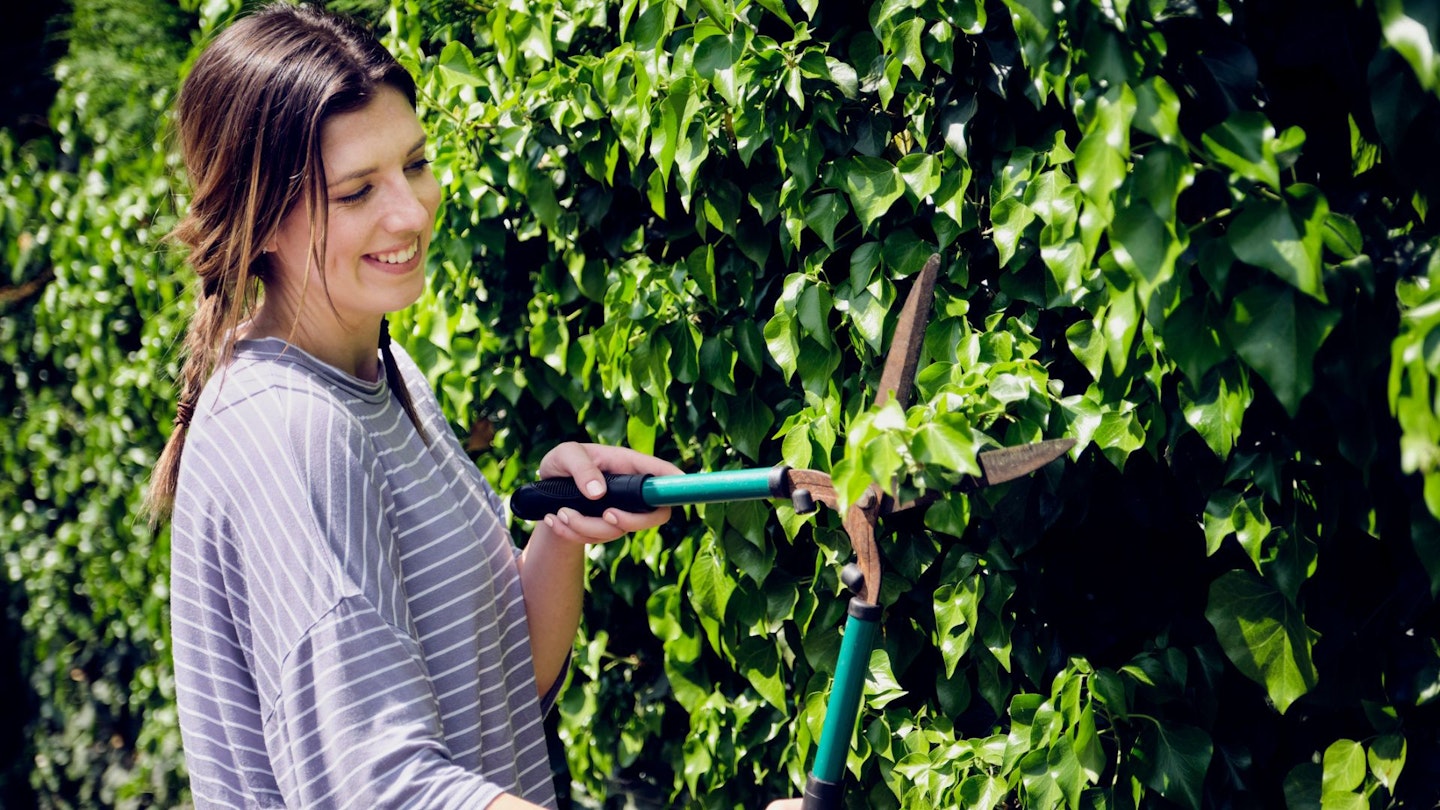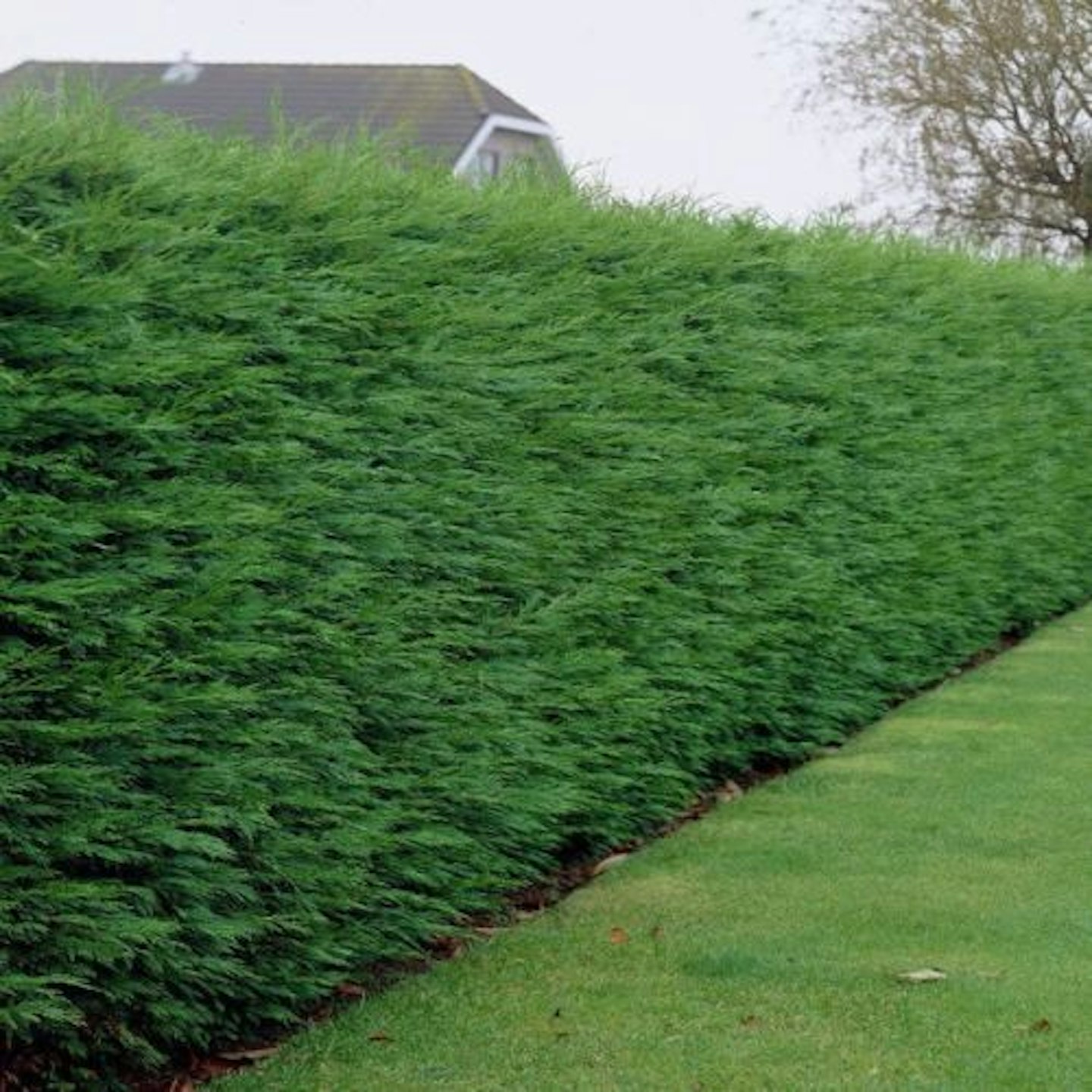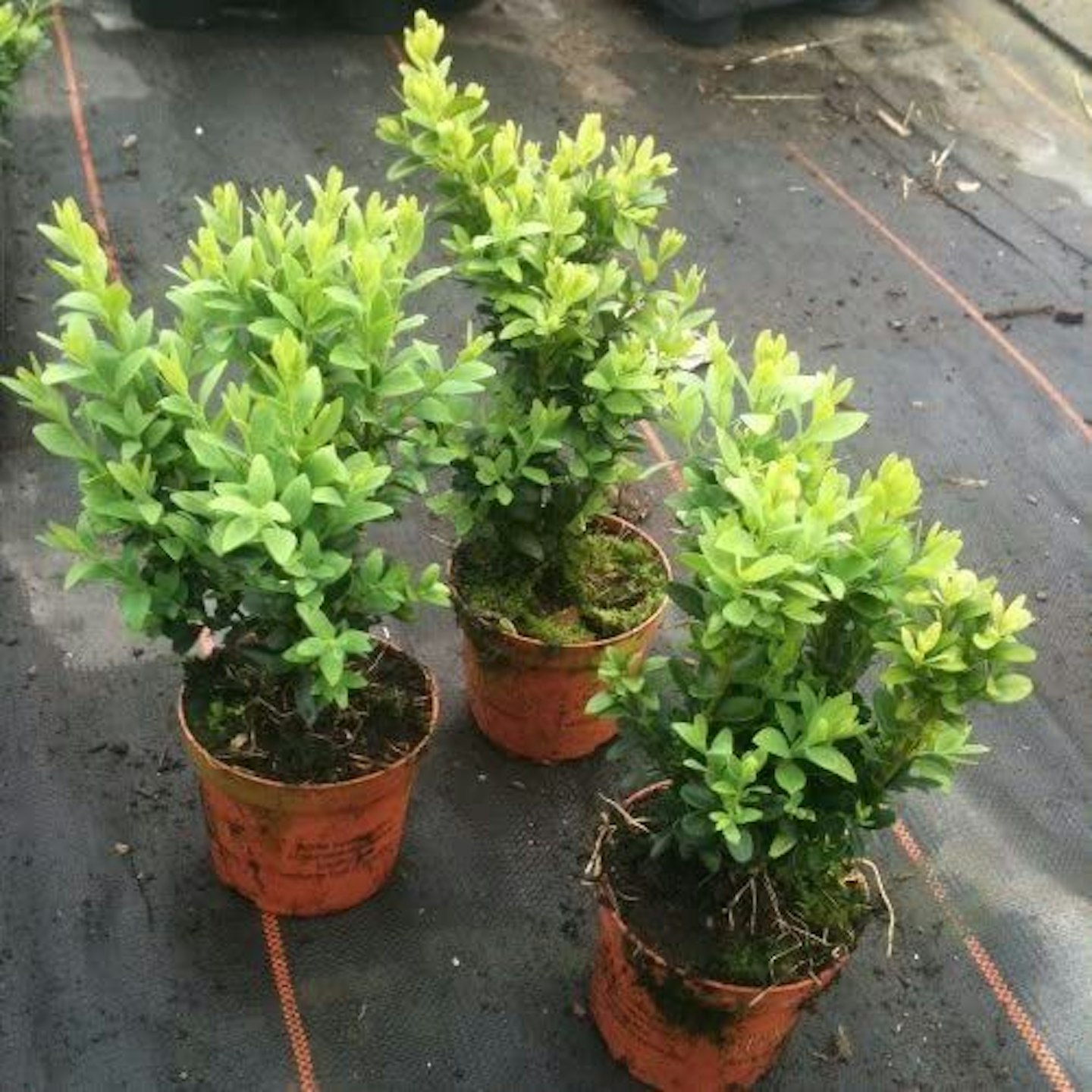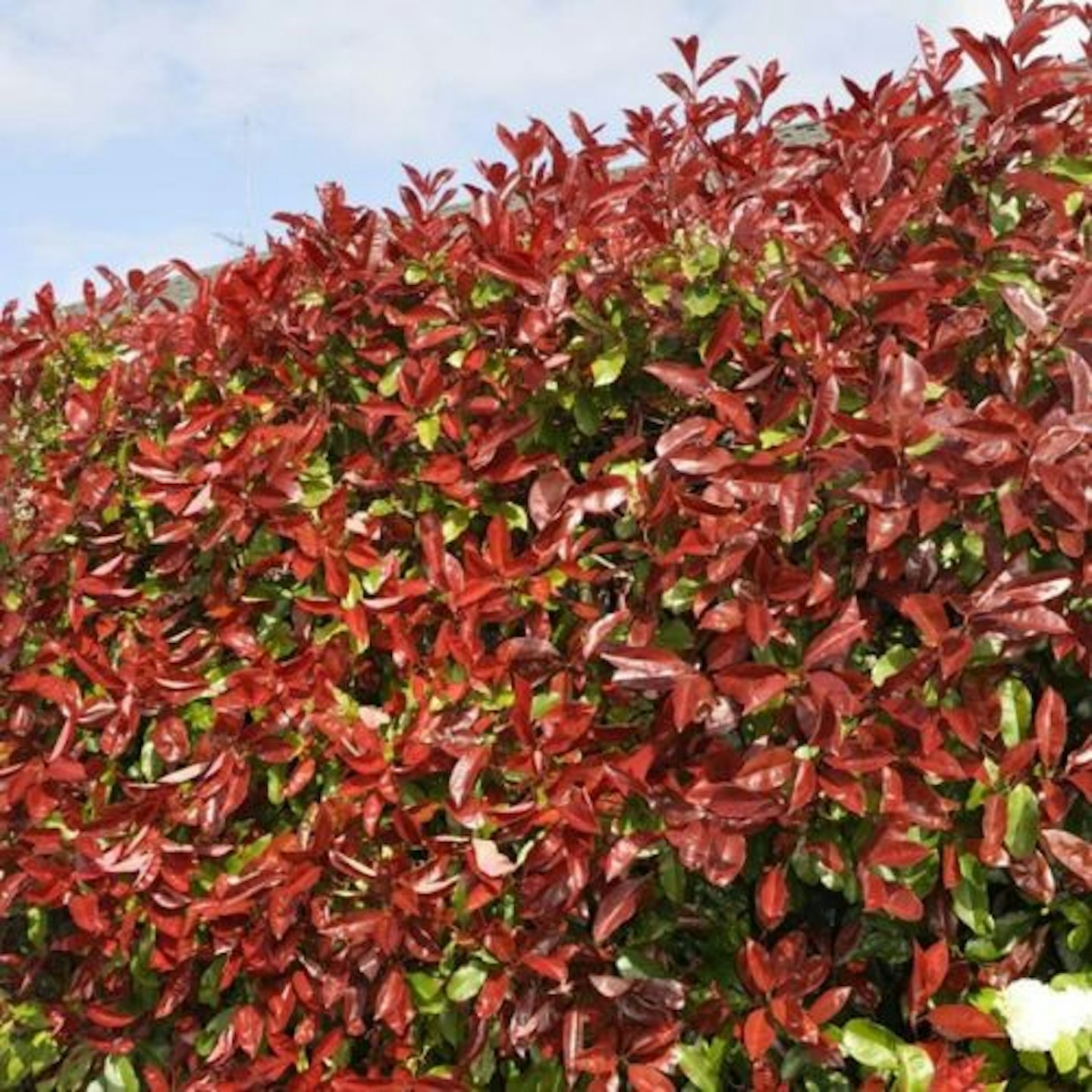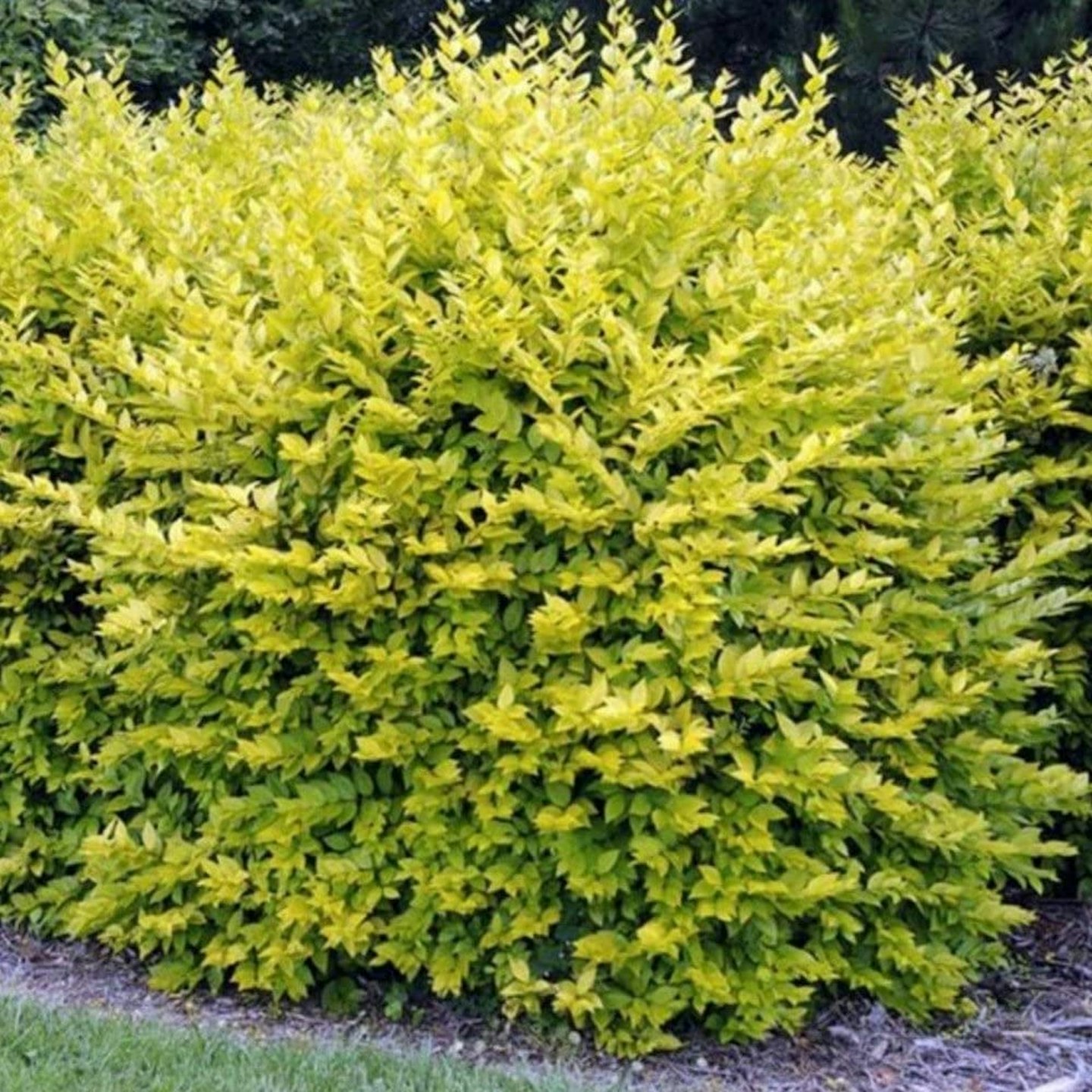The best hedge plants are sturdy specimens that grow into mighty natural barriers. A tall hedge provides protection against wind, noise and even pollution. Not to mention, it creates a suntrap and a habitat for wildlife. Alternatively, a perfectly manicured low hedge can flank pathways, conjuring up notions of tea gardens and stately homes. When buying small plants online it can be a challenge to source the best outdoor plants, which is why we take a lot of time to scour customer reviews for excellent sellers. The good news is there are some cracking 'virtual nurseries' that grow robust small plants that are packaged and delivered with care.
Along with weathervanes, terracotta plant pots and white picket fences, there is something quintessential about a box hedge. A tall, wide and perfectly trimmed hedge largely goes unnoticed and yet these green garden barriers take effort to maintain. And unless you're embracing wild hedgerow vibes, we recommend that you invest in quality hand shears or a cordless hedge trimmer. You may even be inclined to coif your perennial plants into whimsical shapes. Turn your garden into Hampton Court Palace with a topiary that transforms a dull shrub into a bush with bells on. Without getting too fanciful, a good solid hedge is a perennial that provides privacy from the road, neighbours, train tracks or separates a home from a field. Yet that doesn't mean a hedge has to be formal, or indeed nor does it have to be a perennial. In this guide, we'll look at some colourful deciduous options too.
Best hedge plants at a glance:
• Best fast-growing hedging: Green Leylandii Hedging Plants - view on Amazon
• Best formal and topiary hedging: Buxus Sempervirens Box Hedging - view on Amazon
• Colourful hedging: Orange Firethorn Hedging Plants - view on Amazon
Deciduous and flowering hedges, such as Hawthorn and Blackthorn provide a spring show of flowers and an autumn yield of berries. In addition, hedges that have a winter display of berries, such as Pyracantha, can provide welcome colour during the bleaker months. Most hedge plants are hardy and will grow in most soil types and conditions. Notice neighbours' hedges as this is a good identifier of what grows well locally. You don't need planning permission to plant a new hedge, but it is your responsibility to keep it maintained and not let it encroach on a neighbour's plot.
Don't be tempted to snap up all the Leylandii plants at the summer car boot sale without knowing how big these plants can grow. Factor in the height and the spread the plant will eventually grow to. Leylandii, for example, is an extremely fast-growing conifer and can become enormous without regular trimming. In contrast, Yew grows slowly and therefore needs less pruning whilst still providing a dense evergreen shield. For advice on how and when to prune your hedge scroll to the FAQs at the end of this article.
Best hedge plants
Best fast-growing hedging
An evergreen hedge is a good option for providing year-round privacy and shelter. Green Leylandii Hedging Plants
make an effective wind and sound break. Purchase between five and 100 plants from this Amazon Choice seller. They are supplied as 30-50cm plants and are best maintained at a height of no more than two metres, otherwise Leylandii can become difficult to keep in shape. When planting space each plant two to three feet apart to allow for spread. An evergreen hedge requires upkeep, with annual pruning. All conifers, except Yew, need regular trimming.
Customer review: "Our son, who we gifted these to, was very impressed with the standard of the plants. Also, delivery was very swift. Good price. I would definitely buy these again."
Pros
- A natural barrier against noise and wind
- Dense
- Evergreen
Cons
- Needs regular trimming as it's fast-growing
| Height: | Supplied as 30-50cm |
| Spread: | Not specified |
| Growing conditions: | Full sun, partial shade |
- Fast growing
- Non-flowering
- Forms a natural screen
Best formal and topiary hedging
Box and Yew are traditionally planted for formal hedging, providing a leafy perimeter around a manicured lawn and pretty flowerbeds full of roses. This Buxus Sempervirens Box Hedging is slow-growing and ideal for a low hedge. Imagine a perfectly symmetrical box hedge that's been trimmed with shears and pruned to a tee. It's a great option for budding topiarists. Box hedging is best maintained at less than one and a half metres. It grows between 10cm to 15cm a year.
Customer review: "Plants arrived early, planted straight away, watered and fed, at the end of October. Within a week, there has been an impressive growth. I would highly recommend."
Pros
- Easy to maintain
- Traditional border
- Versatile low hedging and topiary
Cons
- Some customers comment that the plants are small when they receive them
| Height: | Supplied as 20cm tall |
| Spread: | Not specified |
| Growing conditions: | Sun, shade or deep shade |
- Slow growing
- Space three plants per metre
- Trim twice a year and mulch
- Hardy
Colourful hedging
Orange Firethorn Hedging Plants has evergreen foliage and gets covered in orange berries during the autumn and winter. Additionally, it's rather spiky plant so provides a security barrier for your garden. This makes Orange Firethorn or Pyracantha a great option for hedging. It can also be trained up a wall. A trellis or fence will support this fast growing shrub.
Customer review: "Lovely healthy little plants. They arrived very quickly and were well-packaged. I have given them a feed and water and they are being planted out today. Great value for money and super service from the Company. Well done and thanks."
Pros
- Grows fast
- Hardy
- Wonderful display of berries
Cons
- Needs training
| Height: | Supplied as 20-40cm |
| Spread: | Not specified |
| Growing conditions: | Full sun, partial shade |
- Can grow up to four metres high with a four metre spread
- Fragrant
- Fast growing
- Use a trellis to train it
Best for red leaves
The leaves of this Photinia 'Red Robin' shrub unfurl a striking bright red in spring then mature to a sumptuous dark green. Trim it up to three times a year for a fresh flush of red shoots each time. Purchase between five and 100 plants from this seller; the more you buy the cheaper the plants. Plant them directly in the ground and space two to three feet apart. This is an evergreen species with the added surprise of gorgeous red leaves.
Customer review: "These Red Robins are small but healthy and strong and will hopefully make a lovely hedge in time. The glorious colour of the new growth will add a bright splash to the garden in spring."
Pros
- Striking red leaves
- Evergreen
- Buy in bulk
Cons
- Some customers have commented that the plants they received were smaller than expected
| Height: | Supplied as 20-40cm |
| Spread: | Not specified |
| Growing conditions: | Full sun, partial shade |
- Hardy
- Non-flowering
- Fast-growing
Best for variegated leaves
With variegated leaves these Gold Privet Hedging Plants provide year-round colour and interest. Ligustrum Aureum is semi-evergreen and produces white flowers in the summer. During a severe winter it can lose some of its leaves. These plants are supplied as 20–40cm potted plants, but be aware that gold privet hedging can grow up to six metres high. It can grow up to 40cm a year and is best maintained at a height of no more than four metres. It's a tough plant that's resilient to pests, weather and pollution; this makes it a great option for a privacy hedge.
Customer review: "18 months since we planted it and it's thriving – gave it a bone and blood meal feed in the autumn – hedge is now forming and thickening up – all plants have thrived."
Pros
- Beautiful golden leaves
- White flowers in the summer
- A great boundary hedge
Cons
- Needs trimming and some care
| Height: | 20-40cm (supplied) |
| Spread: | Not specified |
| Growing conditions: | Full sun |
- Fast growing
- Fully hardy
- Flowers in summer
6.
Hawthorn
Best native and wildlife hedging
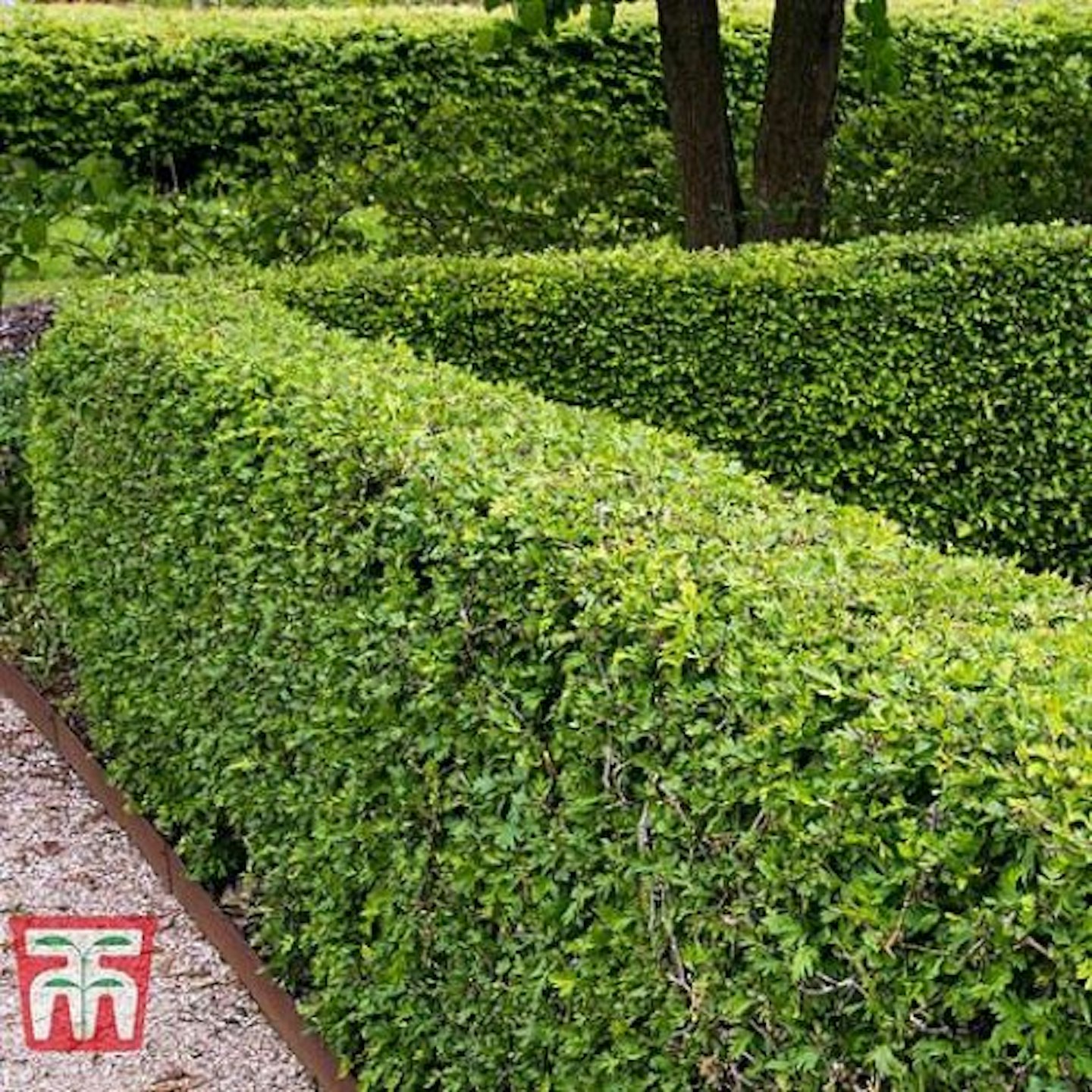
www.thompson-morgan.com
A living wall that provides a habitat for wildlife, Hawthorn hedges are often seen in the countryside. This thorny thicket is low maintenance and can grow up to eight metres, making it a superb security hedge. Additionally, Crataegus produces white flowers in the spring and red berries in the autumn, making it a plant that's in harmony with the seasons. Hawthorn berries are not poisonous but will cause a severe stomach upset if eaten in large amounts. Hawthorn is deciduous so it doesn't provide as much privacy, but it can be colourful and filter the wind which avoids the damage that evergreen hedges cause by creating turbulence.
Customer review: "Reliable delivery, sensible packaging, great product. Already growing happily in the garden."
Pros
- A great option for security hedging
- Encourages wildlife
Cons
- Take care with children as it is thorny and they shouldn't eat the berries
| Height: | 8m |
| Spread: | 8m |
| Growing conditions: | Full sun, part shade |
- Hardy
- Plant four shrubs per metre
- Mulch and feed in winter for the first two years
- Deciduous
7.
Holly
Best security hedging
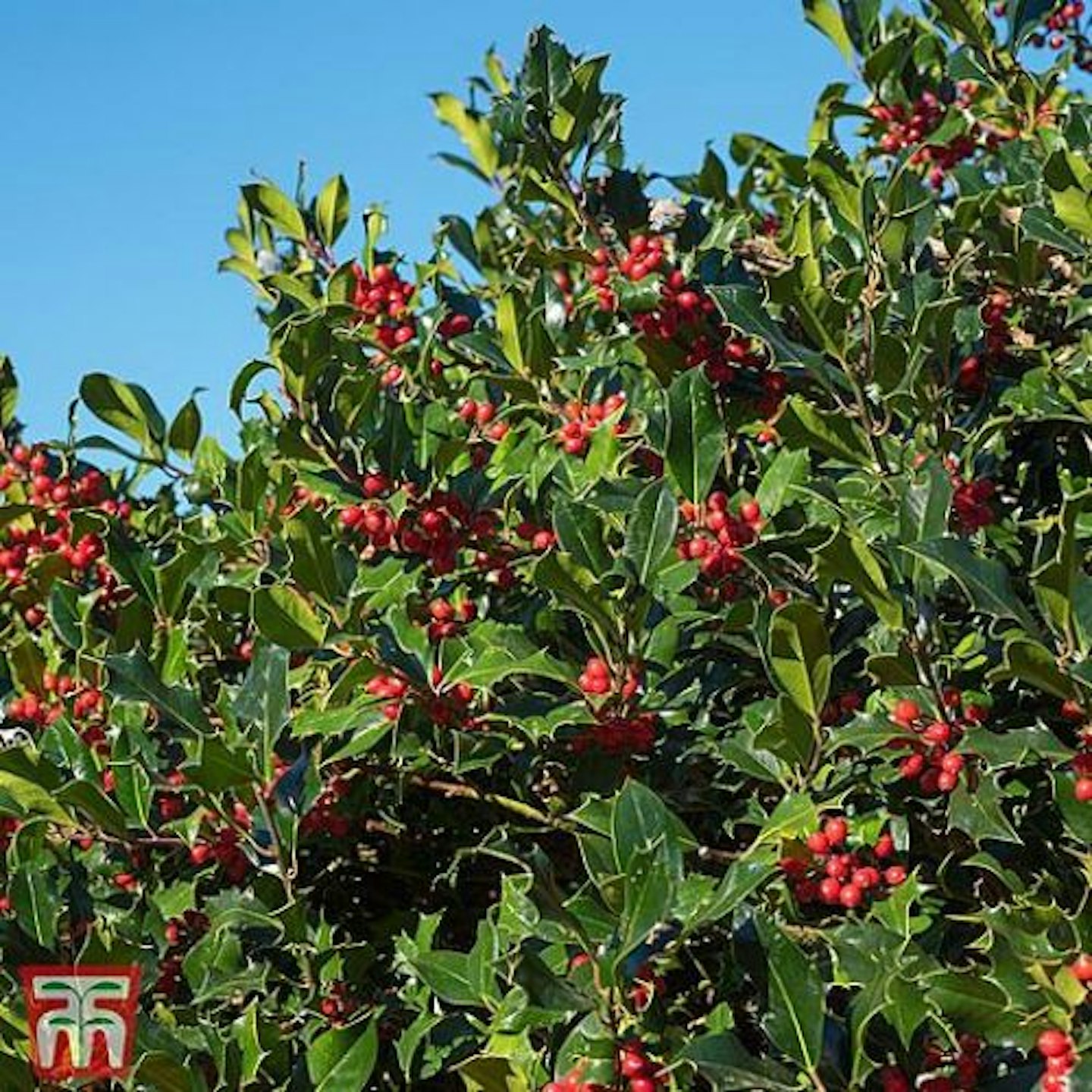
www.thompson-morgan.com
Holly has evergreen leaves that provide a dense, year-round screen. The leaves are spiky which is a great deterrent against intruders. Winter brings a burst of colour with the red berries. Birds benefit from a food source as well providing a bit of festive cheer. Holly bushes can grow to an enormous size, with a height of 12 metres and an eight metre spread. This makes it a very effective boundary in a large garden.
Customer review: "The quality of these holly shrubs was excellent and also well packaged."
Pros
- Effective boundary
- Colour in winter
- Easy to grow
Cons
- Children should take care as the leaves are sharp
| Height: | 12m |
| Spread: | 8m |
| Growing conditions: | Full sun, semi shade |
- Hardy
- Three plants per metre
- Supplied in 9cm pots
8.
Elderberry
Best floral hedging

www.thompson-morgan.com
Elderberry produces delicate white flowers in June and July and tiny purple-black berries in late August. The fruit of Sambucus nigra can be made into cordials, wine, jellies and tinctures. Elderberries have antioxidant properties but the berries must be cooked as they are toxic when they are raw. Widespread across the woodland and countryside of the UK, Elderberry is woven into our folklore, food and natural remedies.
Customer review: "Good size plant, already showing signs of growth."
Pros
- Beautiful white flowers
- Can be used in cookery or remedies
- Easy to grow
Cons
- Raw elderberries are toxic
| Height: | 8m |
| Spread: | 4m |
| Growing conditions: | Full sun, dappled shade |
- Comes in a three litre pot
- Hardy shrub
Best slow-growing hedging
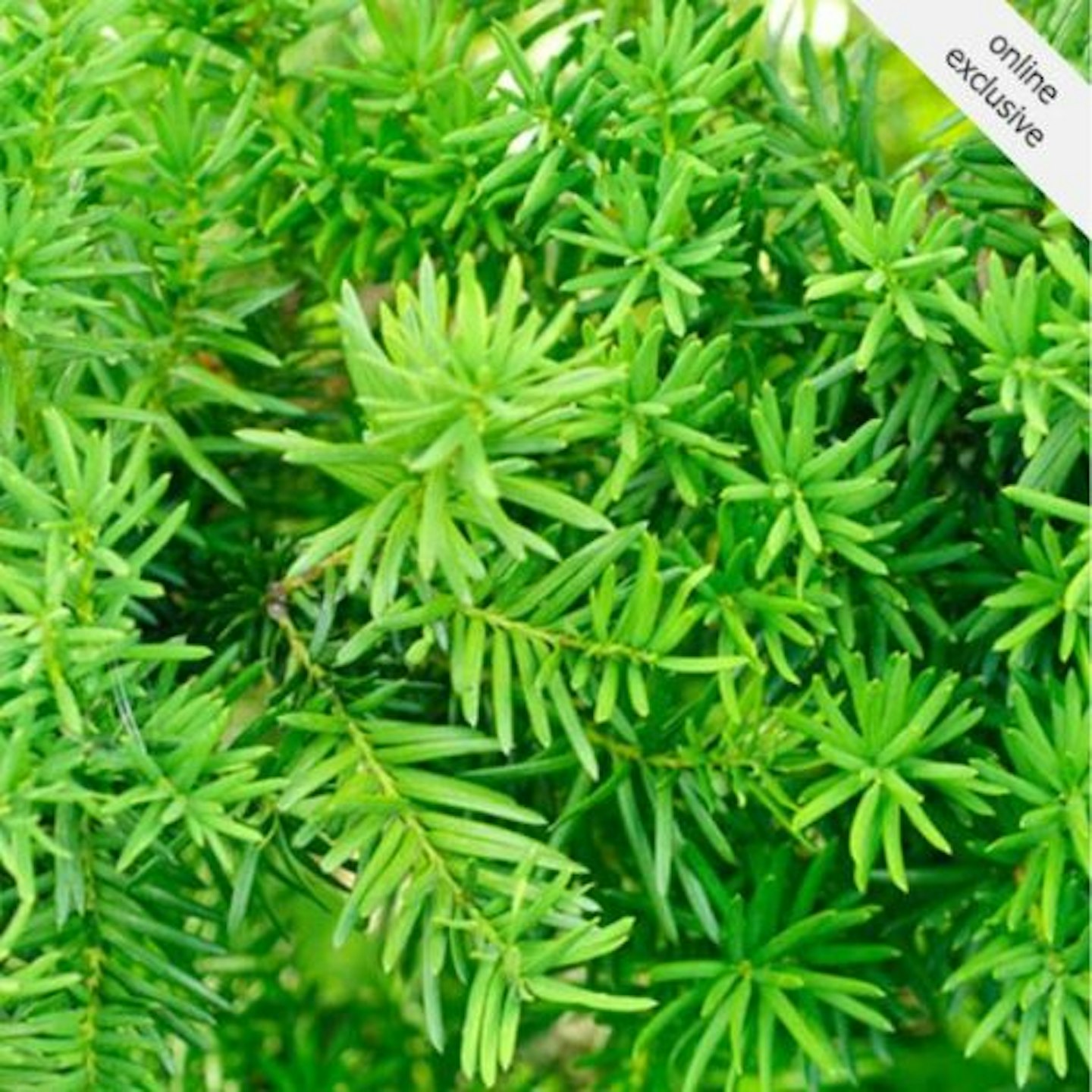
www.wilko.com
Yougarden Yew Hedging Plants grow between 20cm to 30cm a year and is classed as slow-growing. It's a type of conifer, like Pine and Cedar, it produces seed in cones. Over time Yew grows into a wonderfully thick evergreen hedge. Also, it produces red berries that attract birds. It's very easy to grow and a great option for a low hedge.
Customer review: "The plants were excellent specimens with a large amount of healthy foliage and root growth. For the price, they are amazing value and quality."
Pros
- Thick and evergreen
- Attracts wildlife
- Easy to maintain
Cons
- Not the best for tall hedging as it takes a long time to grow
| Height: | 30cm (supplied) |
| Spread: | 39.5cm (supplied) |
| Growing conditions: | Sun to full shade |
- Hardy
- Shade tolerant
- Bright green growth in spring
10.
Blackthorn
Best edible hedging
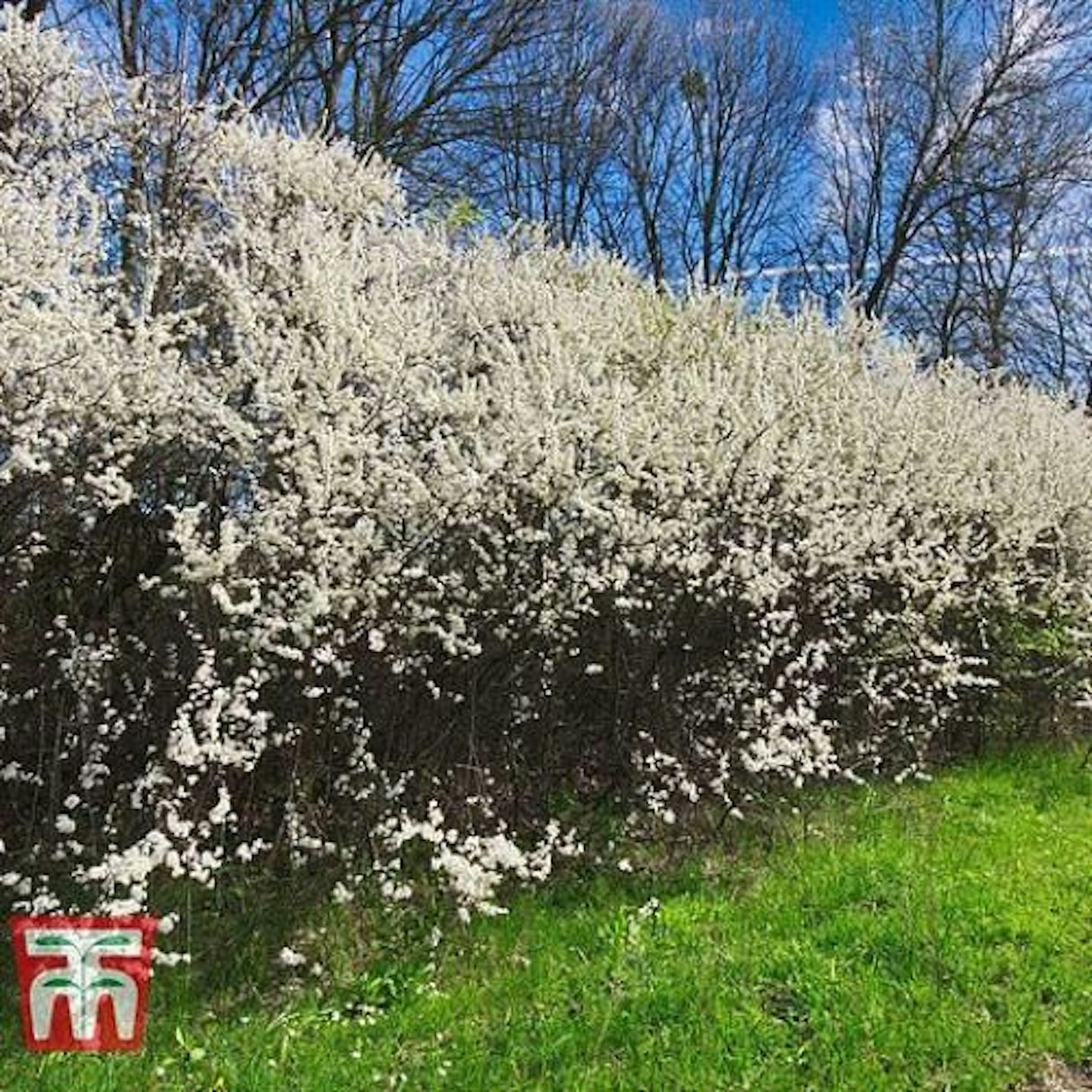
www.thompson-morgan.com
Blackthorn or Sloe have white flowers in late spring and black berries in autumn. It's a wonderful nod to a traditional hedgerow with its dense foliage and thorny branches. Plant these two-litre pot plants 25cm apart and allow for four plants per metre for a single line hedge. Sloe berries can be used as a flavouring to gin, wine, jellies and syrups.
Customer review: "Very nice plants. They came with clear instructions on how to plant and how to look after them."
Pros
- Produces flowers and berries
- Dense and thorny
- Use sloe berries in cookery
Cons
- Sloes should not be eaten raw
| Height: | 4m |
| Spread: | 4m |
| Growing conditions: | Full sun |
- Also known as Sloe bush
- White flowers in spring
- Hardy
FAQs
What should I use to trim a hedge?
You can use power tools, such as a cordless trimmer, as a fast and low-effort way to trim your hedge. Or you can use manual shears. Make sure you've eaten your spinach as you need strong arm muscles to wield those shears and clip a whole hedge. But the hedge will benefit from a cleaner cut, unlike some power trimmers that can tear through the leaves. The rule of thumb is if you're clipping a small or detailed area, use shears, otherwise, use a power trimmer. Remember to wear protective gloves and goggles when using a petrol or cordless hedge trimmer. Check the maximum thickness that your hedge trimmers can cut through, generally, it's 20mm.
How do I trim a hedge?
If you're using a power tool, start at the bottom of the hedge and work your way up because if you cut downwards and hit a snag you may then apply too much force and cut through it and risk damaging the rest of the hedge or yourself.
Small leaves, such as with a privet hedge are much less likely to tear. Whereas larger leaves, like a Griselinia can suffer tearing. If it's a newer hedge, just take small amounts of leaves off to promote growth. Just like hair, hedges need to be clipped in order to gain height, otherwise you'll end up with a thin and weak hedge.
For a neat top, trim the hedge horizontally. Just cut in light strokes, as if you're waving a wand. It is easier to cut through younger green stems than older branches that have become woody.
If you're using hand shears, apply slow and steady clipping, so leaves get a clean cut. Cut from the bottom of the hedge to the top and favour cutting the stems, rather than the leaves. A sharp cut is less stressful to the plant because the cut is cleaner.
If you're tackling an overgrown hedge, use a chainsaw to cut through the worst of the growth. Then, use hedge trimmers to even it up. An old hedge that's in need of reviving can be cut back to a couple of feet with a chainsaw, this will encourage new growth.
What shape should I cut my hedge?
The top should be slightly narrower than the bottom. This is to allow sunlight to reach the leaves all the way down to the base of the hedge and promote even growth.
In addition, a slightly bowed hedge allows snow to fall on it which would otherwise cause damage if it was allowed to build up. Snow drifts are very heavy so it's better not to have a perfectly square hedge if you live somewhere that's prone to snow falls. The hedge could actually end up snapping under the extra weight.
When should I trim my hedge?
In the UK, trim in the summer, between March and August. Take care if there are birds nesting in the hedge. Summer is a risky time to trim because of this. Therefore, aim to trim twice a year: in late February and at the end of August. There'll be less growth throughout the autumn and winter.
How do I cut a newly planted hedge?
Even in its first year, a hedge will need trimming in order to encourage growth and thickening. Cutting the top growth causes energy to refer back down the plant and for it to gain bushy growth. It makes it dense. So simply, take a section off the top of the hedge.
How do I tidy up after cutting a hedge?
You can lay a tarpaulin down while trimming. This could be useful if your hedge is next to gravel. You can use secateurs to fine trim any snags or missed bits.
Sweep up the cut branches and leaves and put them in a compost bin. Thornless hedges can be composted. Smaller cuttings will be composted faster.
What to read next:
Discover everything you need to know to make your outside space look fantastic, quickly and easily, with hundreds of simple ideas, designer tricks, affordable products and expert advice with a Modern Gardens Membership. Find out more about the benefits of being a Member now.
Natalie Knowles is a Homes & Garden Product Writer for Modern Gardens, specialising in garden trends. When she's not flexing her mow-how, Natalie is a successful artist and illustrator.
